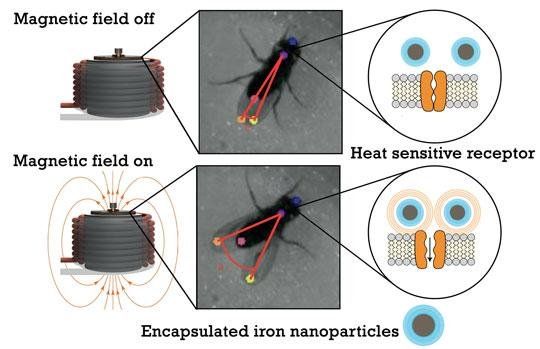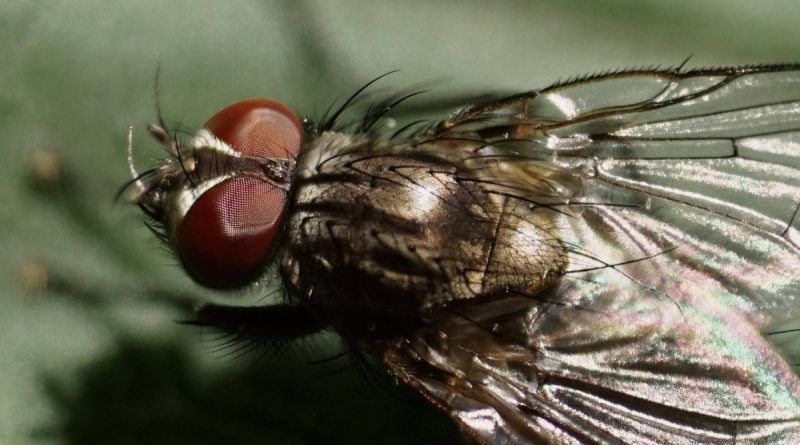Scientists have learned to control flies at a distance
Scientists have learned to control flies at a distance
Scientists from Rice University (USA) have been developing technology to remotely control the neural circuits of living creatures. Their first experiment was successful – they learned how to give commands to a fruit fly. To do this, scientists had to literally “hack” into the insect’s brain, creating a new kind of cyborg.
Using genetic engineering, scientists expressed a number of neurons with thermosensitive ion channels. This led to a pronounced response to heat – the fly’s brain received a command to spread its wings, which it does not do on its own very often. Further, to improve the response to heat, iron oxide nanoparticles, which are heated when exposed to a magnetic field, were introduced into the fly’s brain.

Scientists placed flies in a container with a magnetic coil and monitored their behavior by periodically activating the magnetic field. Numerous experiments showed that the flies spread their wings in half a second after the magnetic field was activated, which is close to the natural speed of their brains. Now scientists are preparing experiments on rodents, and eventually on humans as well.
The ability to remotely, but directly influence neurons to transmit commands bypassing natural pathways is considered the “holy grail” in the field of neurotechnology. In this way it will be possible to defeat many ailments – for example, to restore sight to people without eyes by stimulating the visual cortex. On the other hand, the research customer has quite different plans – DARPA wants to create a headset to read thoughts directly from the brain and transmit them to another person by means of artificial telepathy.
